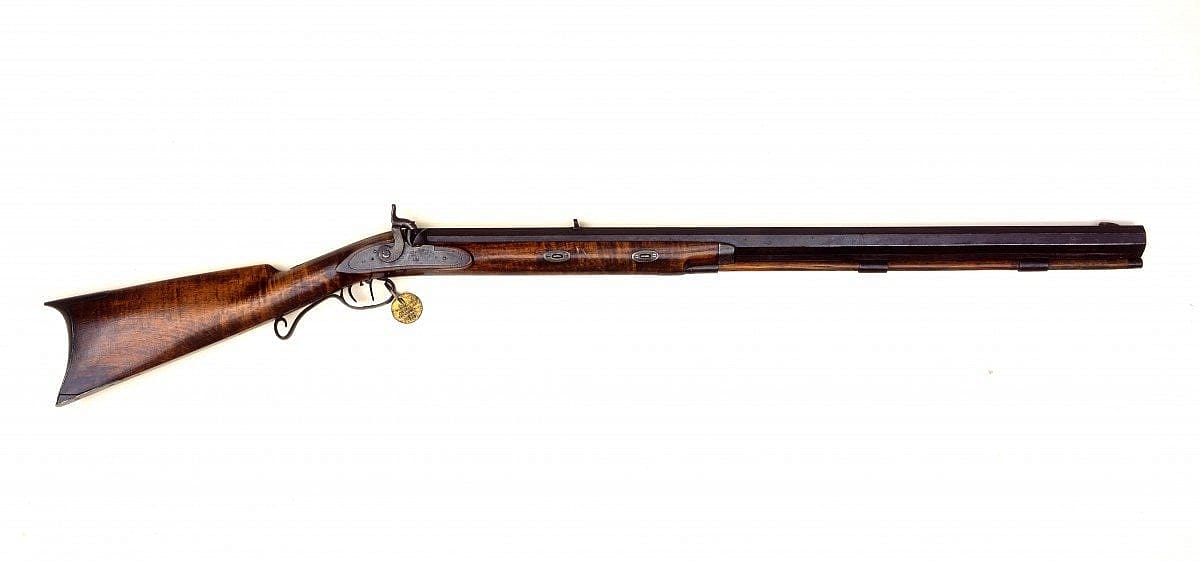
Guns of the Week: December 15 – 19
Guns of the Week: December 15 – 19, 2014
Unloading the Myth – Two of a Kind
This U.S. Rifle Model 1803 was manufactured at the Harpers Ferry Armory. It is a first type, manufactured from 1803 to 1807. About 4,000 were produced. It was the first U.S. regulation rifle. This model was used in the War of 1812. It is also controversially listed as a potential rifle issued for the Lewis and Clark Expedition. It was cited by a historian as being the type of firearm used, while others argue none would have been available yet.
This gun is one of two known specimens dated “1803”; the other is in the Smithsonian Institution, Washington, D.C.
Unloading the Myth – The Telephone Game
Sometimes trying to interpret oral histories becomes a game of telephone. It can be difficult to fully understand written histories, let alone those passed down over a hundred years. And in most cases, we will never know the complete story. Such is the case of John Johnston.
Haven’t heard of him? Perhaps you’d know him better as Jeremiah “Liver-Eating” Johnson. He has been known by many names, Jeremiah, however, being a posthumous title given for the creation of the Robert Redford film.
The oral histories of his life go as such: in 1847 his wife, who was Flathead American Indian, and their unborn child, were murdered by the Crow Indians, causing Johnston to declare war on the Crow Nation. One of the subsets of this story was that, using a bowie knife, he would carve out the liver of a foe and consume it.
This version of Johnston’s life is now hotly contested. Many historians have found written histories that place him at the Mexican American War around this time while others defend the Crow Killer storyline. It’s difficult to find the truth in those stories, but it certainly adds an interesting conversation to the validity of history and specific types of sources.
Unloading the Myth – The Johnson Model 1944 Light Machine Gun
In the late 1930s, Melvin C. Johnson developed the Model 1941 Light Machine Gun. This firearm potentially was created to replace the Browning Model 1918 BAR, but alas, it was rejected by U.S. Army officials. It was picked up by the government of the Dutch East Indies, but because it was occupied by Japan before the guns could be delivered, the United States purchased the stocks and issued them to some Army Rangers and other groups.
The Model 1941 is a short-recoil-operated, air-cooled, magazine-fed firearm in .30-06. Johnson’s magazines could hold cartridges in a row and could be reloaded while still attached to the firearm. Johnson ultimately upgraded the 1941 with the development of the Model 1944 (pictured here). While the basic action remained the same, the stock was replaced by a metallic butt with two steel tubes. And the bipod was replaced by a folding monopod.
Don’t forget to check out our Facebook and Twitter pages!
Written By
Ashley Hlebinsky
Ashley Hlebinsky was formerly the Robert W. Woodruff Curator of the Cody Firearms Museum. She worked between the Smithsonian’s National Firearms Collection and the Center in various capacities. She then joined the Center as a full-time staff member in July 2013, eventually serving as the Robert W. Woodruff Curator of the Cody Firearms Museum. She earned her Bachelor and Master of Arts in American History and Museum Studies from the University of Delaware. While earning her degrees, Ashley was a competitive ballroom dancer in New York City and has recently begun teaching dance in Cody when she’s not locked away in the gun vaults. She is now a private consultant.














